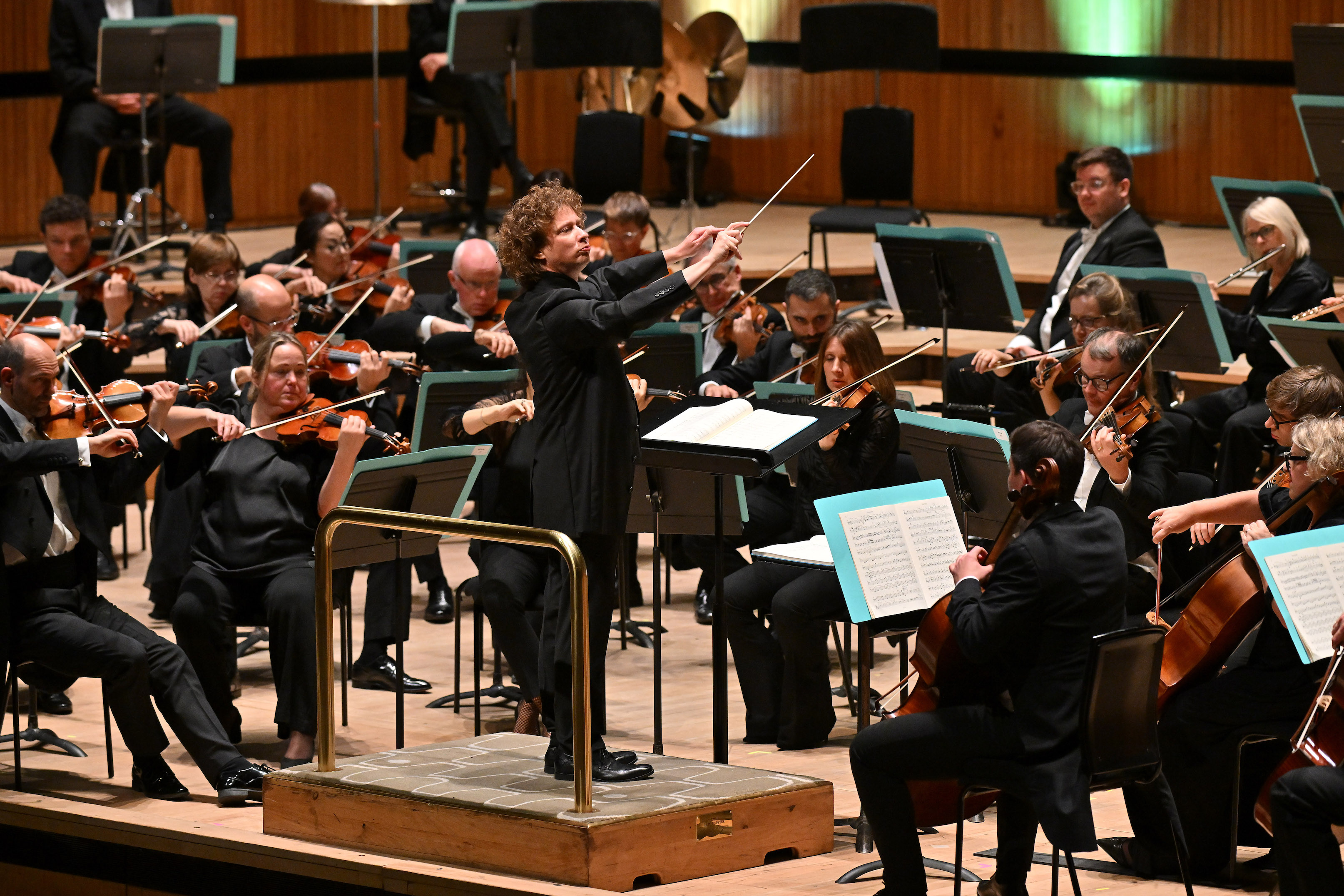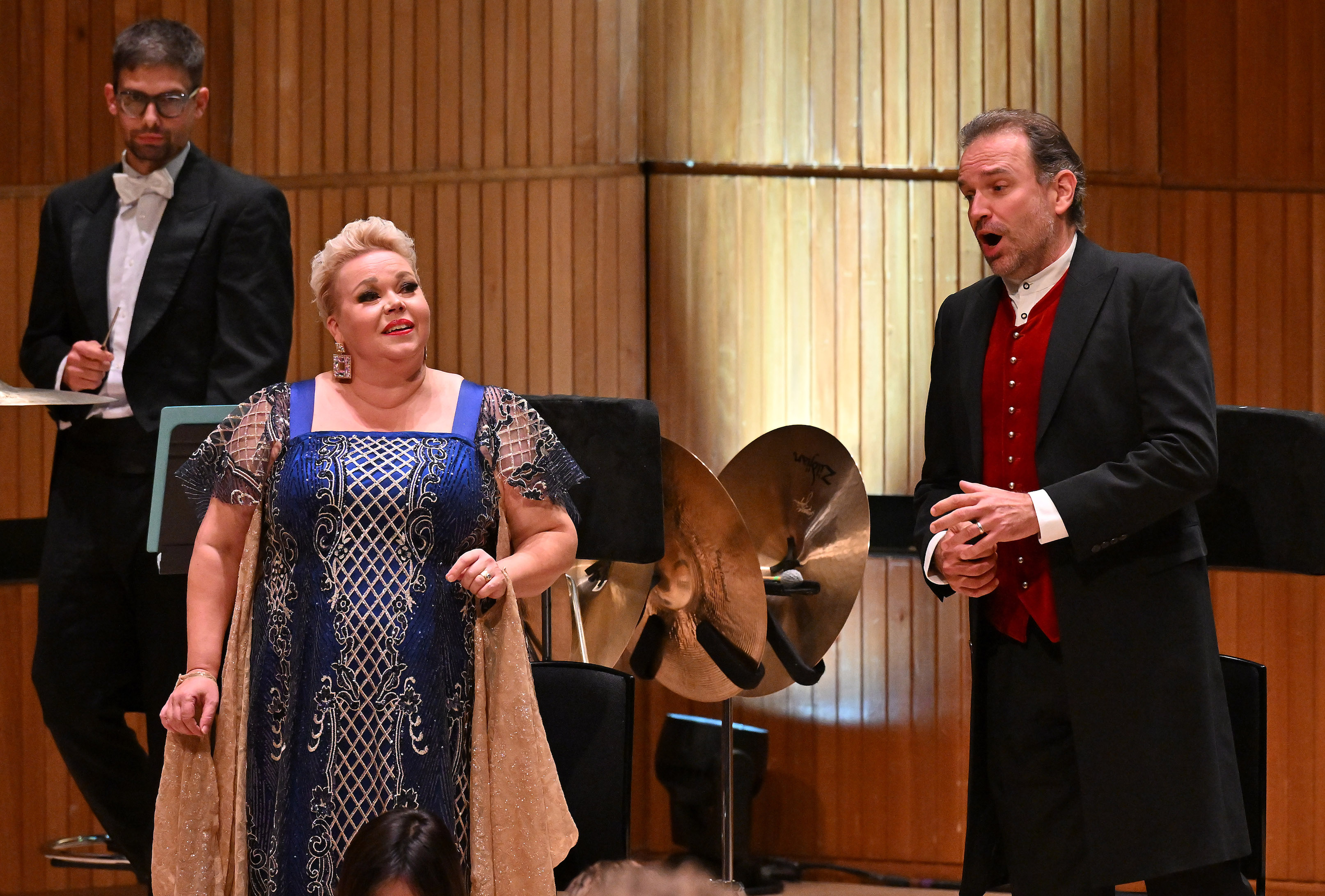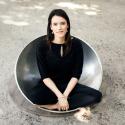This autumn, the Philharmonia’s “Nordic Soundscapes” season promises music suffused with the epic vistas, and weather, of high latitudes, along with reflections on the climate crisis as it threatens the traditional bonds between nature and culture. So far, so piously programmatic. But what difference can such a high-minded schema make to the music made by the orchestra’s outdoorsy Finnish maestro, Santtu-Mathias Rouvali, and his colleagues?
On last night’s evidence from the Royal Festival Hall, enough to refresh and reframe the works they play. In particular, Sir Stephen Hough’s bracing, poised and luminous account of the Grieg Piano Concerto gained an extra dimension from its neighbours on the bill: Oceans by the Icelandic composer María Huld Markan Sigfúsdóttir, and Sibelius’s unwieldy but thoroughly invigorating early choral symphony, Kullervo.
Storms from the ancient North blew through the hall and, without any hint of folkloric kitsch, pushed Grieg’s imperishable mountainside picnic of melodies back into the ever-changing landscapes and traditional musics that inspired them. Hough commands salon suavity when it’s required (as did Grieg) but, with Rouvali (pictured below), also unleashed an elemental force.
Oceans attractively revealed a retro as much as an avant-garde side. But its barometric highs and lows did set the scene for a Grieg concerto firmly rooted in a specific place and idiom. This was from first to last a distinctly Norwegian, rather than German, Grieg. From the opening cascade of thirds, Hough and Rouvali let us hear the vernacular, even sometimes bucolic, freshness behind those great outbursts of pianistic song. Rouvali also coaxed the players into lyric flights of warmth and tenderness, with velvet cellos and melting horns to the fore. A non-histrionic briskness, even lightness, at the outset would hardly have pleased aficionados of a more heroic piano style. But that left Hough with plenty in reserve for the mighty cadenza, delivered with a certain serenity as well as muscle.
Hough’s Grieg abounds in individual touches – small tempi variations, moments of unexpected stillness – but never crowds out the composer’s vision. Meanwhile, Rouvali’s generous and expansive gestures – a hyperactive left hand, broad circular arm movements, podium pivots towards one section or another – bring fluidity and momentum to the transitions from one gorgeous theme to another. Hough’s spellbound adagio had all the long-breathed, elegantly-phrased rapture you could hope for, while Rouvali discovered some rustic grit as well as urban plushness in the accompaniment. That hint of rusticity returned in the finale’s Halling dance, frisky rhythms combined with a mellifluous, easy-flowing lyricism in the piano’s themes.
Both soloist and conductor found earthiness as well as grandeur in the drive towards the finish: a rugged monumentality which saw Hough compete valiantly with full-throttle crescendi from the band. Still, pianist and orchestra sounded like comrades rather than rivals, both swept along by the art and nature of the work’s origins. If Hough has a special gift for making the familiar new, his encore severely tested it: Christian Sinding’s fustily venerable (even corny) competition piece Rustle of Spring. Somehow, he made it sound almost like Liszt.
Sibelius’s Kullervo led us into an even grander, but darker, part of the Nordic forest. Its five movements – three purely orchestral, the others employing a male-voice choir and two solo vocalists – dramatise a tale from the Finnish folk epic the Kalevala, first committed to print by Elias Lönnrot in the 1830s. This episode tells of a flawed, vain hero who unwittingly seduces his long-lost sister. I heard a memorable Proms performance around 15 years ago, but in this smaller space orchestra and voices (soprano Johanna Rusanen, baritone Tommi Hakala, and the 40-plus tenors and basses of the renowned YL Choir from Helsinki) united to drag us on a lurching, intense ride through archaic narrative and tragic passion. 
From flute to trombones, via deeply eloquent violas and cellos, the Philharmonia brought murmuring woods, glittering lakes and howling storms to the banks of the Thames. In the sung sections, the YL singers projected all the flinty ferocity of the saga-like text about the rash hero’s incest, repentance and suicide. Rock-solid, sharp-edged, piercing and massive, the choir struck like a sonic avalanche. In their solo parts, Rusanen and Hakala (pictured above) both commanded the hall despite their positions at the back of the orchestra. Each had granitic authority but also emotional range, above all in Hakala’s anguished soliloquy of horrified guilt.
Raw, uncanny, “primitive” to the 19th-century mind, the eerie sonorities of Kullervo show a semi-domesticated composer still prowling at the fringes of mainstream orchestration. Rouvali, refusing to smooth the rough edges, made the rasping, jagged strangeness of this musical landscape into a place of sinister wonder. And, as he intended, it cast a backward light over Grieg’s seemingly more polished reworking of folk motifs to illuminate their still-wild heart. On this showing, Nordic Soundscapes should clear a path for some spectacular discoveries.













Add comment